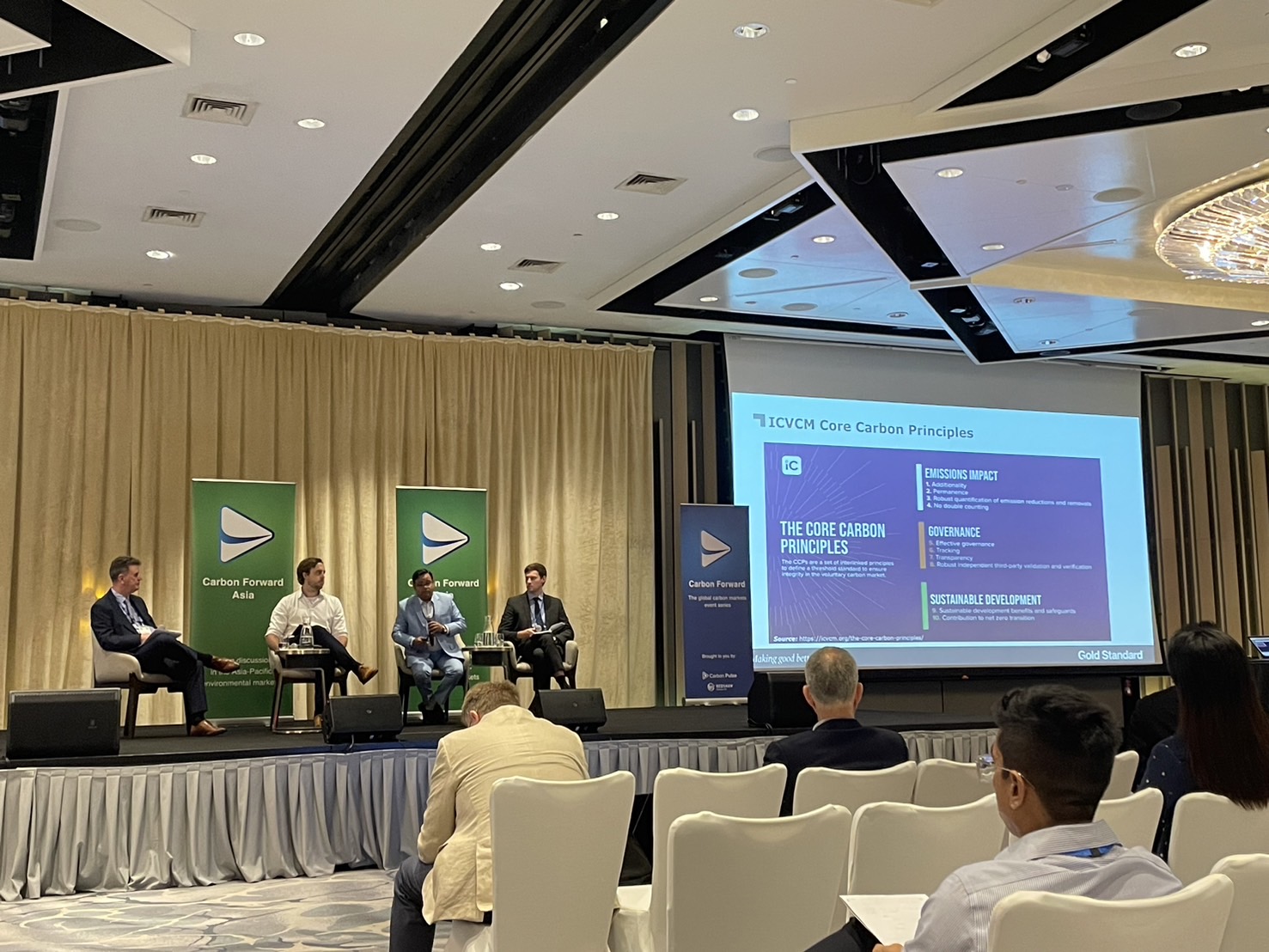
Carbon Forward Asia was held on March 7 and 8 at the Raffles City Convention Centre in Singapore. (Photo: Sherry Hu)
Carbon Forward Asia took place on March 7 in Singapore to delve into carbon markets in the Asia-Pacific region from the perspectives of developers, consultancies, and academics, alongside discussions on the 29th United Nations Climate Summit (COP29), the EU Emissions Trading System (EU ETS), and the Carbon Border Adjustment Mechanism (CBAM).
China: Relaunching voluntary carbon credit scheme for market expansion
China, one of the world's most promising carbon markets, entered the final stage of reactivating its Certified Emission Reduction (CCER) scheme in January. With the compliance period ending in late 2023, short-term participation incentives for companies are limited. However, long-term demand for CCERs is expected to rise due to their lower cost for emissions offsets, despite the 5% cap of the national Emissions Trading Scheme (ETS).
As most of the CCERs previously issued have been depleted or are nearing expiration, coupled with the government's stringent control over volume and methodology to prevent price plunges due to oversupply as in the past, supply volume will remain very limited in the long run. Additionally, it is expected that the aluminum and cement industries will be added to the national carbon trading system this year to enhance liquidity. According to Timing Carbon Asset Management's CEO Kong Ching-shi (孔晴熙) carbon prices will likely reach RMB 110-120 per tonne in the future.
South Korea: Reforming system to boost carbon prices
With the early development of the carbon trading system, Korea's carbon price has fallen as low as around USD 7 per tonne. The government plans to overhaul the system in 2026, including reducing the number of free allowances, to address persistently low prices due to oversupply. In the long run, Korea's carbon prices should reach USD 35-40 per tonne to achieve the country's carbon reduction goals.
Since Korea does not currently have a government-led voluntary carbon market for companies to meet their supply chain requirements, the establishment of such a market will be a major concern in the future.
Japan, Malaysia: Urgent need for clear policy direction
While Japan has carbon trading systems such as J-Credit and the Joint Crediting Mechanism (JCM), issues such as bureaucracy, limited land availability, and lack of transparency in issuance remain, pending clearer guidelines. Overall, Japan's policy remains obscure as to whether there will be an ETS or a carbon tax system implemented in the future. Therefore, companies may need to seek cooperation with other countries to fulfill their needs.
Similar to Japan, Malaysia, despite having the Bursa Carbon Exchange (BCX) in place, is facing great uncertainty in the market. The Malaysian government is currently studying whether to opt for a voluntary carbon market, an ETS, or a carbon tax. Meanwhile, the country's abundant natural resources have attracted many companies to develop local carbon credits, thereby tapping into the voluntary carbon market.
Vietnam, Indonesia: Constructing policy framework and enhancing liquidity
While neighboring countries have established voluntary carbon exchanges, Vietnam is discussing the establishment of its own carbon market that connects with the international community. Existing regulations are also being revised, including the reporting methodologies for Scope 1 and Scope 2 emissions and the scope of regulated enterprises.
Although Indonesia seems to be progressing faster than Vietnam by having an operational exchange, the operation has been suspended after only one transaction indicates that the country's carbon market still lags behind and needs to be improved in terms of liquidity, which is considered a key factor in whether a market can operate successfully and deliver benefits. (See Table 1 below).
Table 1. Market size and trading volume of various carbon trading systems

* The higher the liquidity, the more participants are willing to join the market.
Source: LSEG
Although carbon markets in the Asia-Pacific region face unclear policies, it does not diminish their enormous development potential. Hum Wei Mei, head of Asia Pacific at AirCarbon Exchange (ACX), believes that ASEAN countries may not necessarily need a unified market like the EU, but rather have their own systems to suit their needs. Similar or better results can be achieved through close cooperation, such as the carbon credit agreement between Cambodia and Singapore. Even without a carbon tax system, everyone is participating in the market in their own way, gradually constructing robust carbon markets in the Asia-Pacific region.